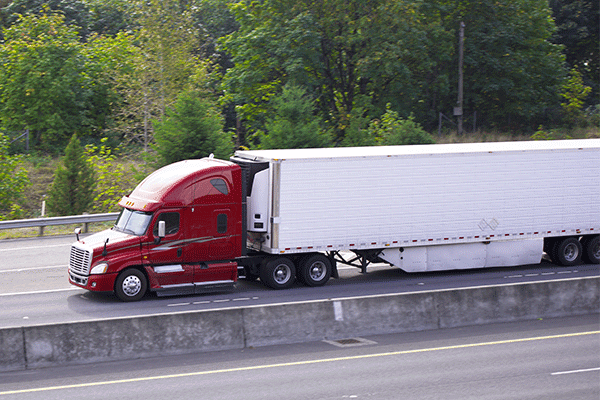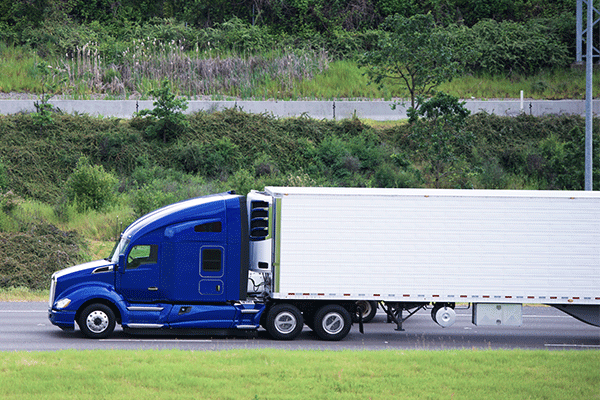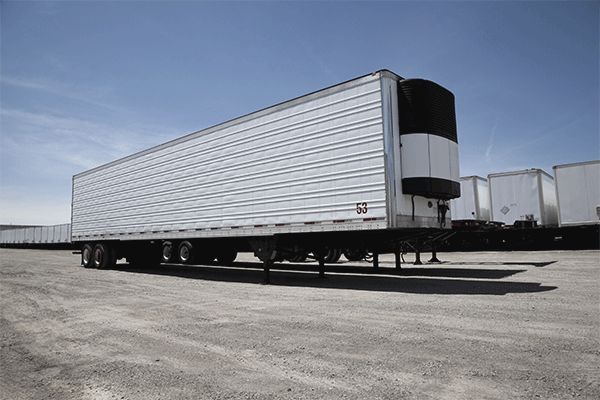When it comes to temperature-controlled shipping, reefers make the world go round. And, for the shippers with products that have special temperature considerations, using a reefer simply can’t be avoided.
That said, the price of utilizing a refrigerated trailer fluctuates greatly from one commodity to another. This can be incredibly irritating for the companies moving reefer freight as budgeting from one load to another can be difficult.
The reasons why your most recent temperature-controlled shipment cost more than the previous can be explained and, in this blog, we’ll do so.
You see, here at ATS we’ve worked with reefer freight on a consistent basis for years. In doing so, we’ve developed a keen understanding of how temperature impacts the cost of shipping reefer freight and the answer may surprise you.
Below, you’ll learn everything you need to know about the role your freight’s transport temperature plays on the cost of using a reefer. Use this information in the future as you look to get the most from your budget and we guarantee you’ll see results.
What is a Reefer Trailer?
Refrigerated trailers, also called “reefers”, are a class of semi-trailers dedicated to transporting commodities that need to be temperature controlled. Reefer trailers consist of an enclosed — and often insulated — container with an external cooling unit attached to its front.
Together, a reefer’s insulated walls and cooling unit keep freight away from temperature ranges that would otherwise damage its condition. Although reefers aren’t necessarily the most prevalent trailer type on today’s highways — an accolade given to dry vans — they still provide a trusty solution for freight requiring temperature control.
“Stop-Start” vs. “Continuous" Cooling
The cost of moving reefer commodities fluctuates greatly based on the consistency with which each reefer’s cooling unit is used. “Start-stop” and “continuous” are the terms used to describe each of a reefer’s temperature control settings. Let’s talk a little bit about each of them.
“Start-Stop” Cooling
“Start-stop” cooling is a term used to describe the process where a reefer’s temperature control unit only turns on when the container’s internal temperature reaches a certain point. To bring the temperature back to where it needs to be, these cooling units begin running until the “target” temp is reached and then shut off again.
Generally, start-stop cooling will end up costing far less for the driver than continuously running these units for the duration of a shipment (sometimes even half the price).
“Continuous” Cooling
True to its name, continuous reefer temperature control is non-stop. And, for commodities that require it, running the cooling unit attached to a reefers container for the entire duration of a shipment’s journey will cost a pretty penny.
If you’ve ever wondered why your reefer price was so high, it’s likely that your freight needed continuous temperature control.
Unfortunately, continuously running a reefer — although not always necessary — isn’t avoidable for the commodities that need it.
As such, transporting cargo like fruits and vegetables that need to be kept fresh can get expensive — especially without proper pre-cooling.

Reefer Temperature Settings
Believe it or not, reefers are actually a very versatile class of semi-trailers. From hazmat goods and fresh produce to pharmaceutical freight, reefers make themselves useful in a variety of situations.
When it comes to the cost of using these trailers, though, temperature truly matters.
Maintaining a shipment’s temperature, and the amount of effort a reefer’s cooling unit exerts to do so has a direct impact on the final price you’ll pay to move refrigerated freight.
Generally, the temperature “setting” that reefer freight is hauled at, fall into one of these three categories:
Each of these reefer “settings” dictates the frequency with which the cooling unit must be used to maintain desired temperatures. As a reefer’s cooling unit is used more, the cost associated with these shipments rises to match.
1. Protect From Freeze/Heat
Protect-from-freeze reefer freight is one of the most common use cases for these trailers.
Some commodities — such as liquids, cheese, pharmaceuticals and paint — need to be kept from getting too hot and/or too cold during their journey from A to B.
In these instances, shippers will use a reefer with “protect from freeze” temperature settings to move these goods.
Due to the insulated nature of a reefer’s container, transporting these products doesn’t require too much effort from the refrigeration unit on each trailer.
Instead, “protect from freeze” services only require a reefer’s cooling systems to engage when the temperature within each trailer reaches certain thresholds.
A large factor influencing the price of using a reefer is the amount of fuel the cooling unit is made to use. As such, “protect from freeze/heat” products — where the cooling unit is set to “stop-start” — won’t cost as much as moving more delicate freight.
The temperature outside a reefer’s walls may also play a role in the cost of maintaining these protection temperatures.
For example:
Maintaining a temperature of 60 degrees along a 300 mile stretch of Arizona interstate on a 108 degree July afternoon will be difficult. Doing so will require using the cooling unit heavily which, in turn, will increase your price.
On the flip side, asking a reefer to maintain consistent above-freezing temperatures during the cold of a North Dakota winter will also cost you more money.
Although the costs of utilizing “stop-start” refrigeration aren’t as hefty as continuously running these refrigeration units, you’ll pay more money if your freight requires more care.
Note, many times, these “protect from freeze/heat” products can be transported for half the year in a dry van — when the weather outside is still suitable —and the other half in a reefer.
Since the cost of using a dry van vs. a reefer is usually quite different, understanding your freight’s requirements is important to properly budget. Be sure to work with a transportation provider whose expertise you trust to help you with these decisions.
Related: How Location and Time of Year Impact Reefer Shipping
2. Fresh/Refrigerated (Generally Most Expensive)
Soon-to-be ripe fruits and vegetables, farm-fresh chicken and other temperature-sensitive commodities fall into the fresh/refrigerated category of reefer freight.
Transporting these products — products that need to remain fresh throughout a shipment’s transit — can often prove challenging and become expensive.
In fact, moving fresh/refrigerated freight is the most expensive type of reefer cargo to transport.
Since these products are hypersensitive to temperature adjustments in either direction — where too hot will spoil them and too cold will cause damage — proper refrigeration is key.
To ensure the successful transit of these goods, and avoid costly damages, each reefer must continuously run its refrigeration unit to maintain the 32 to 36 degrees required to keep these goods fresh.
Although reefers are well insulated, products that must be fresh by the time they reach store shelves require intimate care. Any fluctuation in temperature can prove costly which makes keeping the reefer’s cooling unit running for the entirety of these product’s journey necessary.
That said, the more these refrigeration units — which are powered by diesel — are used, the more you should expect to pay.
The cost of the fuel used to run these reefer units is billed directly to you, the shipper.
As such, if your commodity requires its reefer to maintain a consistent temperature — like produce and other consumable goods — your price will be higher than moving many types of frozen or other reefer goods.

3. Frozen
Frozen reefer freight — provided it’s properly pre-cooled — is generally the easiest type of reefer commodity to ship.
Insulation is the main difference between the enclosure of a reefer compared to that of a dry van. And, depending on the age and condition of each trailer, is usually quite capable of maintaining temperatures once closed.
This makes moving frozen commodities plenty doable — particularly for shorter hauls — using “stop-start” refrigeration.
Keeping freight frozen during transit means that the temperature behind a reefer’s container door must hover between 0 and -10 degrees.
Reefers that are preparing to, or consistently, haul frozen goods are dutifully pre-cooled to these sub-zero temperatures before pick-up in preparation of successful transit.
That said, should extenuating circumstances such as the weather outside make keeping freight cool more difficult, your freight rate will increase as a reefer’s cooling system needs to start and restart more frequently.
A Special Note About Shipping Ice Cream
Although ice cream can be shipped at -10 degrees — a temperature frequently offered by reefer carriers — there can be exceptions. In rare cases, ice cream may actually require colder in-transit refrigeration temperatures (such as -20 degrees) to keep it frozen.
It doesn’t take much of a temperature fluctuation for ice cream to lose its consistency and maintaining sub temperatures under -10 degrees isn’t sustainable in most reefers. As such, ice cream may need to be moved within a super-insulated container to maintain temperatures of -20 degrees.
Finding a reefer truck, trailer and driver equipped with the capabilities to move ice cream with these requirements can often prove tricky, which will increase your cost.
How Can You Save Money On Your Reefer Price?
Saving money on your reefer freight can be done in two ways:
- Properly pre-cooling freight
- Ensuring equipment is up-to-date
1. Properly pre-cooling freight
Ensuring that your commodity is cooled before it enters a reefer’s container will go a long way toward minimizing how much the cooling unit is used.
The less each cooling unit needs to run, the less you’ll need to pay to move your reefer freight.
Pre-cooling is especially important for products that normally run on a continuous cycle.
Saving money where you can is important when running reefer freight. Pre-cooling goods and working with your provider to ensure each trailer is cooled prior to pick-up is one of the easiest ways to do just that.
2. Ensuring Equipment is up-to-date
Too often the equipment (boxes, crates, containers) used to ship reefer goods are old and/or damaged in some way. This can make it more difficult for these commodities to maintain desired temperatures. Making sure that your equipment is in good condition will impact the amount each reefer’s cooling unit needs to run and save you money on your freight costs.
Additionally, reefers become less effective at holding temperatures as they age. As a result, older reefers — with more shoddy insulation — end up being more expensive to use than newer trailers.
To get the best bang for your buck, be sure to ask your provider how they perform trailer upkeep and what they do to ensure each reefer is well maintained.
What are the Dimensions of a Reefer Container?

Understanding how the temperature of your reefer freight impacts the price of getting it moved is only the first step in getting the most from your budget. The more you understand these trailers the better off you’ll be.
To help you improve your knowledge of reefer trailers, here are the traditional dimensions of a reefer trailer:
Reefer Trailer Container Dimensions |
|
| Door Height | 110 inches |
| Length | 48-53 feet |
| Internal Height | 92 - 98 inches |
|
Internal Width |
102 inches |
| Total Pallets | 26 (Unstacked) |
| Cargo Weight Capacity | 42,500 pounds |
Make sure to take stock of your needs and weigh them against the capacity a reefer can provide. Should you need more room, consider other transportation options such as a dry van for shorter hauls.
Working with a seasoned transportation provider will help you ensure that, when it’s time for the rubber to meet the road, all of your bases are covered and your temperature-sensitive commodities are in good hands
Here at ATS, we take pride in transparently answering all of your most pressing transportation questions. Make sure to check out and subscribe to our learning hub for more great information coming out weekly.
If you’d like more information about how ATS can save you money on your next reefer shipment, reach out. We’ve got a transportation expert ready and waiting to help you meet your goals.



